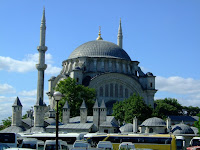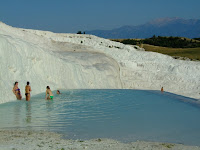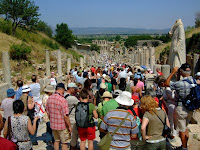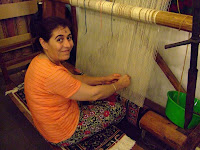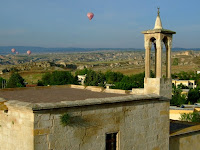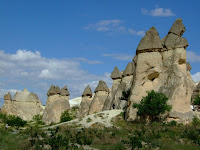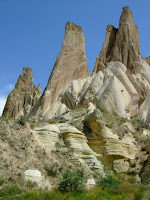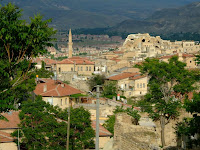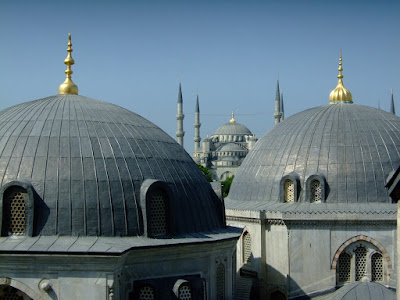 All the advice we had read said that the Topkapi Palace and especially the Harem suffered from long queues unless you were up with the chickens. So we were, and were standing at the ticket office when the booths opened a few minutes before 9 a.m.
All the advice we had read said that the Topkapi Palace and especially the Harem suffered from long queues unless you were up with the chickens. So we were, and were standing at the ticket office when the booths opened a few minutes before 9 a.m.As is so often the way in the Middle East, the ATMs dish out ‘big money’ (YTL50) but no one has change and everyone wants ‘small money’.
 However, this was a government run museum and I was first customer of the day so the cash-drawer would be flush with change, or so I thought as I tendered my YTL50 for an entrance fee of YTL20. “Small money, small money” was the only response from the other side of the glass. Reluctantly using my last 20 I paid up.
However, this was a government run museum and I was first customer of the day so the cash-drawer would be flush with change, or so I thought as I tendered my YTL50 for an entrance fee of YTL20. “Small money, small money” was the only response from the other side of the glass. Reluctantly using my last 20 I paid up.Again, the advice was to go straight to the Harem to beat the queues but there was no one there so we wandered around the display of carriages and through the old kitchens.
 Emerging back into the Second Court we saw that the Harem booth was open and the few people that had been queuing were on their way into the Harem. Once again I flashed my 50 only to hear the dreaded “small money” cry. However, since I knew that he had already served some others, he must have had some 20s at least so I offered a 10 as well as the 50 to get two 20s in change. What a ridiculous situation, the major tourist attraction in the largest city in Turkey and they cannot give change for a YTL50 note.
Emerging back into the Second Court we saw that the Harem booth was open and the few people that had been queuing were on their way into the Harem. Once again I flashed my 50 only to hear the dreaded “small money” cry. However, since I knew that he had already served some others, he must have had some 20s at least so I offered a 10 as well as the 50 to get two 20s in change. What a ridiculous situation, the major tourist attraction in the largest city in Turkey and they cannot give change for a YTL50 note. Still, we had our ticket and it was time to enjoy the delights of the Harem. In the Sultan’s time it was a feast for his eyes in a totally different sense from that which the tourists enjoy today. Perhaps he, too, was admiring the walls and the tile work and gilded surfaces and not the occupants – who knows?
Still, we had our ticket and it was time to enjoy the delights of the Harem. In the Sultan’s time it was a feast for his eyes in a totally different sense from that which the tourists enjoy today. Perhaps he, too, was admiring the walls and the tile work and gilded surfaces and not the occupants – who knows?By the time we had emerged from the far end of the Harem back into the main squares of the Palace, the place was indeed over-run with tourists. We finished off the other areas in the Palace then headed off for another wander around the city.
 We followed the tramlines up the main street as far as the University, followed the walls around and down to the Bazaar area and down towards the waterfront to find the Spice Bazaar, a delight to the nose as well as the eyes.
We followed the tramlines up the main street as far as the University, followed the walls around and down to the Bazaar area and down towards the waterfront to find the Spice Bazaar, a delight to the nose as well as the eyes.





